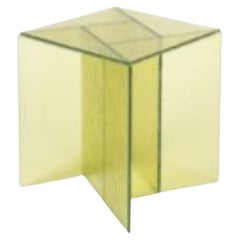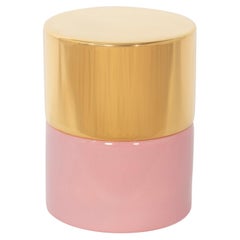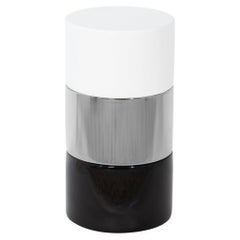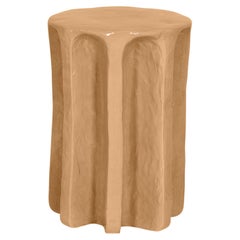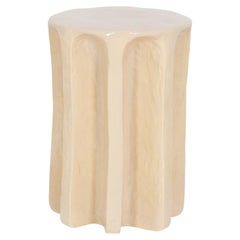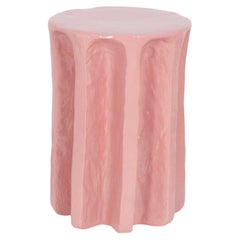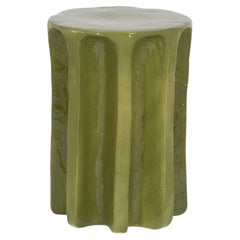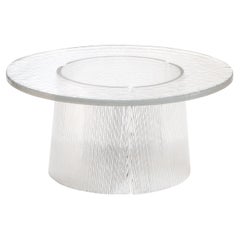Pulpo Side Table
2010s German Post-Modern Side Tables
Glass
2010s German Post-Modern Side Tables
Ceramic
2010s German Post-Modern Side Tables
Ceramic
2010s German Post-Modern Side Tables
Ceramic
2010s German Post-Modern Side Tables
Ceramic
2010s German Post-Modern Side Tables
Ceramic
2010s German Post-Modern Side Tables
Ceramic
2010s German Post-Modern Side Tables
Glass
2010s German Post-Modern Side Tables
Glass
2010s German Post-Modern Side Tables
Glass
2010s German Post-Modern Side Tables
Aluminum
2010s German Post-Modern Side Tables
Aluminum
2010s German Post-Modern Side Tables
Aluminum
2010s German Post-Modern Side Tables
Ceramic
2010s German Post-Modern Side Tables
Aluminum
2010s German Post-Modern Side Tables
Ceramic
2010s German Post-Modern Side Tables
Glass
2010s German Post-Modern Side Tables
Glass
2010s German Post-Modern Side Tables
Brass, Steel
2010s German Post-Modern Side Tables
Glass
2010s German Post-Modern Side Tables
Steel
2010s German Post-Modern Side Tables
Steel
2010s German Post-Modern Side Tables
Glass
2010s German Post-Modern Side Tables
Glass
2010s German Post-Modern Side Tables
Glass
2010s German Post-Modern Side Tables
Brass, Steel
2010s German Post-Modern Side Tables
Brass, Steel
2010s German Post-Modern Side Tables
Steel
2010s German Post-Modern Side Tables
Steel
2010s German Post-Modern Side Tables
Steel
2010s German Post-Modern Side Tables
Steel
2010s German Post-Modern Side Tables
Steel
2010s German Post-Modern Side Tables
Steel
2010s German Post-Modern Side Tables
Steel
2010s German Post-Modern Side Tables
Brass, Steel
2010s German Post-Modern Side Tables
Brass, Steel
2010s German Post-Modern Side Tables
Brass, Steel
2010s German Post-Modern Side Tables
Brass, Steel
2010s German Post-Modern Side Tables
Brass, Steel
2010s German Post-Modern Side Tables
Brass, Steel
2010s European Side Tables
Ceramic
2010s European Side Tables
Ceramic
2010s Italian Side Tables
Ceramic
2010s Italian Side Tables
Ceramic
2010s European Side Tables
Ceramic
2010s German Post-Modern Side Tables
Steel
2010s European Side Tables
Ceramic
2010s European Tables
Brass, Steel
2010s European Tables
Steel
2010s European Tables
Steel
2010s European Tables
Ceramic
2010s Italian Tables
Ceramic
2010s European Tables
Ceramic
2010s Italian Modern End Tables
Glass
21st Century and Contemporary German Post-Modern Side Tables
Brass
2010s German Post-Modern Side Tables
Glass
2010s German Post-Modern Side Tables
Ceramic
- 1
Pulpo Side Table For Sale on 1stDibs
How Much is a Pulpo Side Table?
A Close Look at Post-modern Furniture
Postmodern design was a short-lived movement that manifested itself chiefly in Italy and the United States in the early 1980s. The characteristics of vintage postmodern furniture and other postmodern objects and decor for the home included loud-patterned, usually plastic surfaces; strange proportions, vibrant colors and weird angles; and a vague-at-best relationship between form and function.
ORIGINS OF POSTMODERN FURNITURE DESIGN
- Emerges during the 1960s; popularity explodes during the ’80s
- A reaction to prevailing conventions of modernism by mainly American architects
- Architect Robert Venturi critiques modern architecture in his Complexity and Contradiction in Architecture (1966)
- Theorist Charles Jencks, who championed architecture filled with allusions and cultural references, writes The Language of Post-Modern Architecture (1977)
- Italian design collective the Memphis Group, also known as Memphis Milano, meets for the first time (1980)
- Memphis collective debuts more than 50 objects and furnishings at Salone del Milano (1981)
- Interest in style declines, minimalism gains steam
CHARACTERISTICS OF POSTMODERN FURNITURE DESIGN
- Dizzying graphic patterns and an emphasis on loud, off-the-wall colors
- Use of plastic and laminates, glass, metal and marble; lacquered and painted wood
- Unconventional proportions and abundant ornamentation
- Playful nods to Art Deco and Pop art
POSTMODERN FURNITURE DESIGNERS TO KNOW
- Ettore Sottsass
- Robert Venturi
- Alessandro Mendini
- Michele de Lucchi
- Michael Graves
- Nathalie du Pasquier
VINTAGE POSTMODERN FURNITURE ON 1STDIBS
Critics derided postmodern design as a grandstanding bid for attention and nothing of consequence. Decades later, the fact that postmodernism still has the power to provoke thoughts, along with other reactions, proves they were not entirely correct.
Postmodern design began as an architectural critique. Starting in the 1960s, a small cadre of mainly American architects began to argue that modernism, once high-minded and even noble in its goals, had become stale, stagnant and blandly corporate. Later, in Milan, a cohort of creators led by Ettore Sottsass and Alessandro Mendini — a onetime mentor to Sottsass and a key figure in the Italian Radical movement — brought the discussion to bear on design.
Sottsass, an industrial designer, philosopher and provocateur, gathered a core group of young designers into a collective in 1980 they called Memphis. Members of the Memphis Group, which would come to include Martine Bedin, Michael Graves, Marco Zanini, Shiro Kuramata, Michele de Lucchi and Matteo Thun, saw design as a means of communication, and they wanted it to shout. That it did: The first Memphis collection appeared in 1981 in Milan and broke all the modernist taboos, embracing irony, kitsch, wild ornamentation and bad taste.
Memphis works remain icons of postmodernism: the Sottsass Casablanca bookcase, with its leopard-print plastic veneer; de Lucchi’s First chair, which has been described as having the look of an electronics component; Martine Bedin’s Super lamp: a pull-toy puppy on a power-cord leash. Even though it preceded the Memphis Group’s formal launch, Sottsass’s iconic Ultrafragola mirror — in its conspicuously curved plastic shell with radical pops of pink neon — proves striking in any space and embodies many of the collective’s postmodern ideals.
After the initial Memphis show caused an uproar, the postmodern movement within furniture and interior design quickly took off in America. (Memphis fell out of fashion when the Reagan era gave way to cool 1990’s minimalism.) The architect Robert Venturi had by then already begun a series of plywood chairs for Knoll Inc., with beefy, exaggerated silhouettes of traditional styles such as Queen Anne and Chippendale. In 1982, the new firm Swid Powell enlisted a group of top American architects, including Frank Gehry, Richard Meier, Stanley Tigerman and Venturi to create postmodern tableware in silver, ceramic and glass.
On 1stDibs, the vintage postmodern furniture collection includes chairs, coffee tables, sofas, decorative objects, table lamps and more.
Finding the Right Side-tables for You
While the range of styles and variety of materials have broadened over time, the priceless functionality of side tables has held true.
Antique and vintage side tables are an integral accent to our seating and provide additional, necessary storage in our homes. They can be a great foundation for that perfect focal piece of art that you want all your guests to see as you congregate for cocktails in the living room. Side tables are indeed ideal as a stage for your decorative objects or plants in your library or your study, and they are a practical space for the novel or stack of design magazines you keep close to your sofa.
Sure, owning a pair of side tables isn’t as imperative as having a coffee table in the common area, though most of us would struggle without them. Those made of metal, stone or wood are frequently featured in stylish interiors, and if you’re shopping for side tables, there are a couple of things to keep in mind.
With respect to the height of your side tables, a table that is as high as your lounge chair or the arm of your couch is best.
Some folks are understandably fussy about coherence in a living room area, but coherence doesn’t necessarily mean you can’t mix and match. Feel free to introduce minimalist mid-century modern wooden side tables designed by Paul McCobb alongside your contemporary metal coffee table. If you think it isn’t possible to pair a Hollywood Regency–style side table with a contemporary sofa, we’re here to tell you that it is. Even a leggy side table can balance a chunky sofa well. Try to keep a limited color palette in mind if you’re planning on mixing furniture styles and materials, and don’t be afraid to add a piece of abstract art to shake things up.
As far as the objects you’re planning to place on your side tables, if you have heavy items such as stone or sculptures to display, a fragile glass-top table would not be an ideal choice. Think about what material would best support your collectibles and go with that. If it’s a particularly small side table, along with a tall, sleek floor lamp, it can make for a great way to fill a corner of the room you wouldn’t otherwise easily be able to populate.
Whether you are looking for an antique 19th-century carved oak side table or a vintage rattan side table (because rattan never went away!), the collection on 1stDibs has you covered — find Art Deco side tables, bamboo side tables, travertine side tables and more today.
- 1stDibs ExpertSeptember 25, 2019
A side table should stand one to three inches below the arm of the sofa or chair it is placed next to.
- What are side tables used for?1 Answer1stDibs ExpertApril 5, 2022Side tables are used next to furniture like beds and couches to provide an accessible place for keeping essential items at hand. In the living room, side tables are often used to display flower arrangements, photos or books as well as to set down a drink. In the bedroom, a side table is typically populated with items like a lamp, bedtime reading material, and a charging device for a phone. Shop a collection of vintage and contemporary side tables from some of the world’s top sellers on 1stDibs.
- What are nesting side tables?1 Answer1stDibs ExpertApril 5, 2022A nesting table is a set of tables designed to be stored one inside or under the other, giving them a layered or stacked appearance. A side table is a table that’s placed beside a piece of furniture. A nesting side table would be a series of side tables in graduated heights that can be stacked or nested together. Shop a collection of nesting tables from some of the world’s top sellers on 1stDibs.
- What are side tables called?1 Answer1stDibs ExpertNovember 13, 2024Side tables are often simply called side tables. If positioned on either end of a sofa or loveseat, you might refer to them as end tables. General terms for side tables and other tables commonly used in seating areas include occasional tables and accent tables. On 1stDibs, shop a wide range of side tables.
- 1stDibs ExpertMay 5, 2023There are two differences between end tables and side tables: function and size. Typically, end tables go beside a chair or at opposite ends of a sofa and have smaller tabletops, while side tables go toward the sides of seating areas or against walls and feature a larger surface area. However, many people use the words side and end tables interchangeably, so these differences may not always apply. On 1stDibs, shop a variety of end and side tables.
- 1stDibs ExpertOctober 7, 2024The difference between a side table and a coffee table is mainly in the size and shape. Coffee tables usually feature larger tops but shorter legs. People typically place them in front of a sofa or a loveseat to rest books, drinks, remote controls and other items. Side tables also store items, but they are usually positioned beside an accent chair or at the ends of a sofa or loveseat. Shop a diverse assortment of side tables and coffee tables on 1stDibs.
- 1stDibs ExpertMay 5, 2023To determine whether a side table is an antique, closely examine its details. Older pieces will typically have telltale features like wood pegs, hand-cut dovetails with some slight imperfections and mortise-and-tenon construction. Tables that are a consistent color throughout or have machine-cut moldings or carvings are unlikely to be antiques. A certified appraiser or knowledgeable antiques dealer can be a helpful resource when dating tables. Shop a collection of antique, vintage and modern side tables on 1stDibs.
- 1stDibs ExpertSeptember 28, 2021A tall side table may also be called a console table. While these furnishings are not as common in today’s interiors as their coffee-table and side-table counterparts, console tables are stylish home accents and have become more prevalent over the years. The popularity of wood console tables took shape during the 17th and 18th centuries in French and Italian culture, and were exclusively featured in the palatial homes of the upper class. Find console tables today on 1stDibs.
- 1stDibs ExpertSeptember 23, 2024What tiny side tables are called varies. Some people may simply refer to them as side tables. Others describe them as end tables if they're placed on either end of a sofa or loveseat. When used elsewhere in a room, small side tables are often called accent tables. On 1stDibs, explore a large selection of antique, vintage and contemporary side tables.
- 1stDibs ExpertMarch 25, 2024No, a side table shouldn't always be lower than a sofa. To make it easy to access items on a table, a sofa's arms should generally be no more than 2 to 3 inches above or below the tabletop. This rule of thumb differs from the one for coffee tables, which should be as tall or 1 to 2 inches shorter than the seat height of the sofa to ensure a balanced look. Explore a large selection of side tables on 1stDibs.
